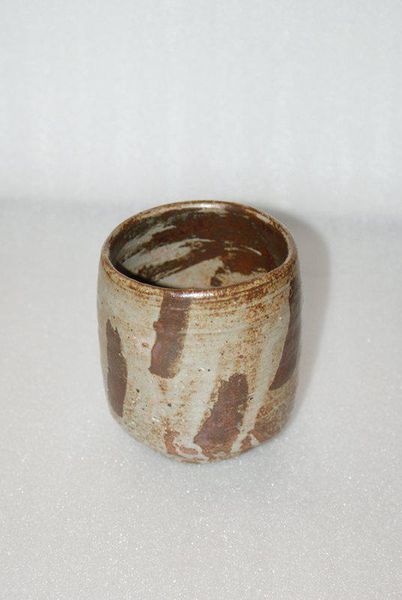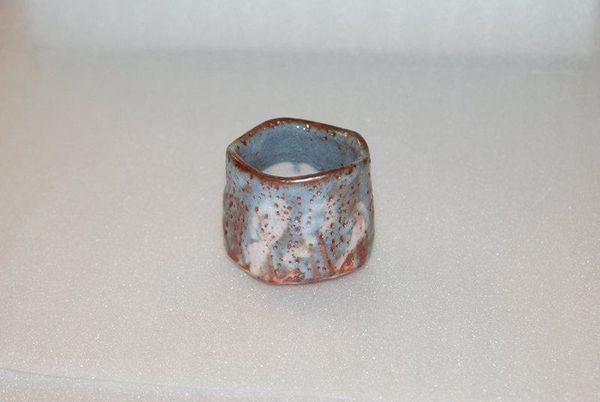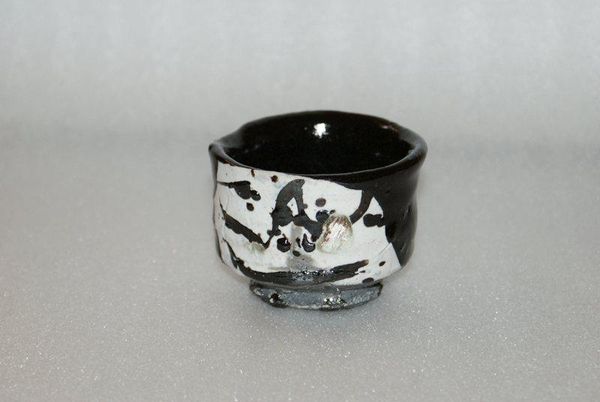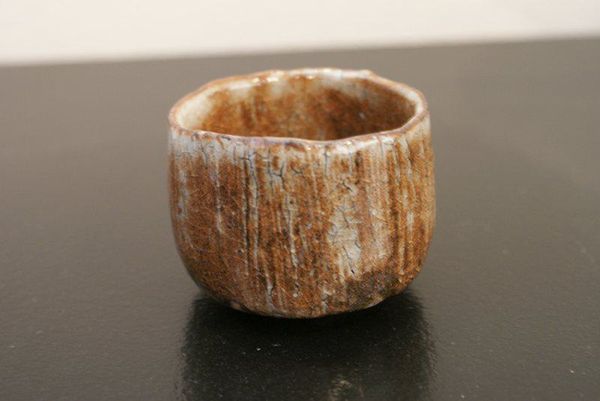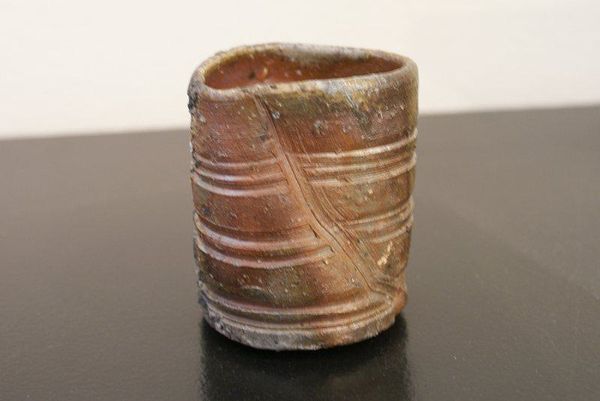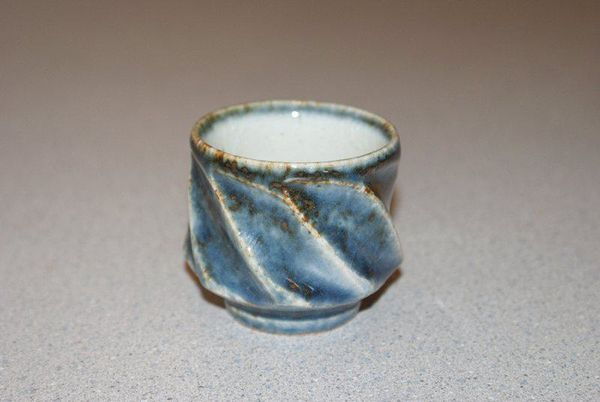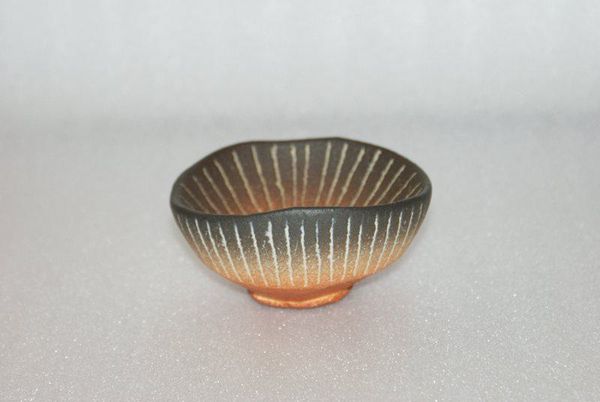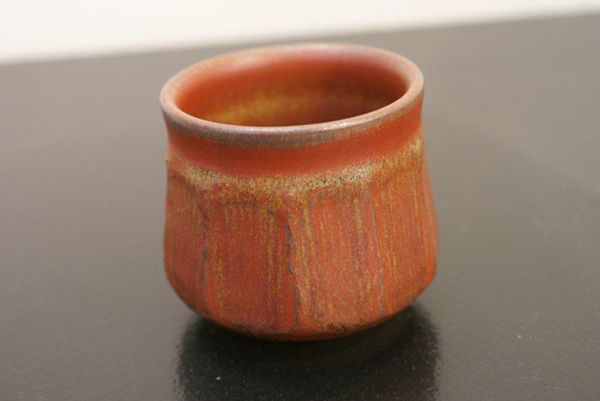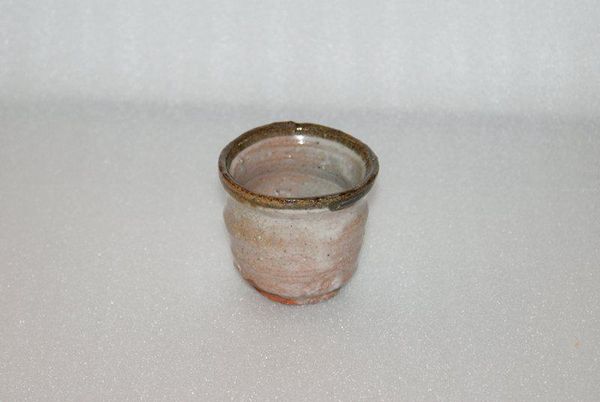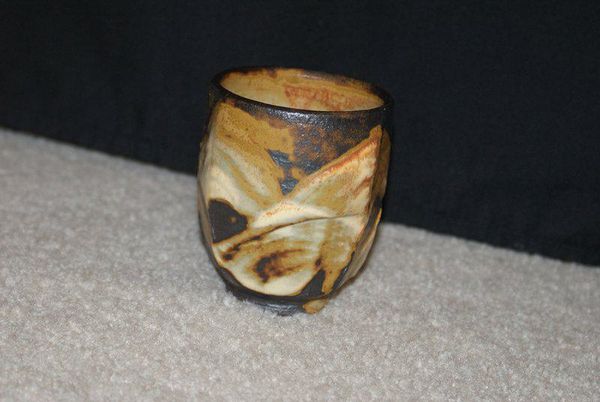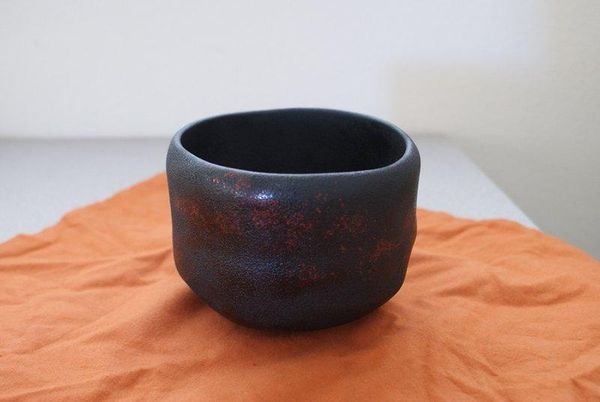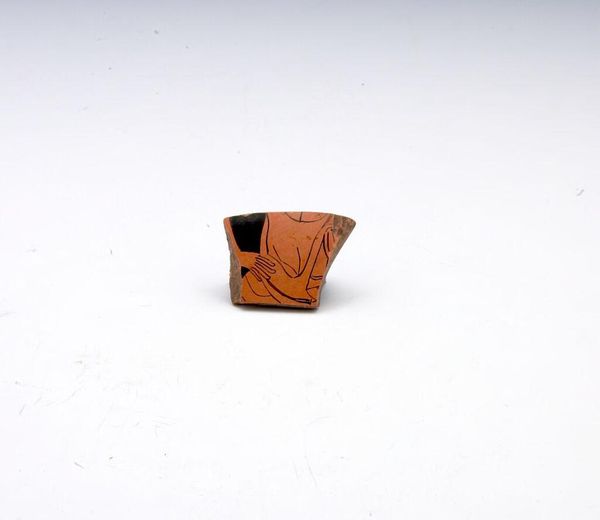
ceramic
#
asian-art
#
ceramic
#
japan
#
stoneware
#
ceramic
Dimensions: 3 1/4 × 4 5/8 in. (8.26 × 11.75 cm)
Copyright: No Known Copyright
Curator: We're looking at a striking tea bowl, or "chawan," by Takatori Hassen. This particular stoneware piece is part of our Japanese art collection and was crafted before 2010. Editor: My first impression? It’s deceptively simple, yet there's a raw, almost geologic energy in the glaze. The way those contrasting colours cascade feels quite dynamic for a static object. Curator: Absolutely. And it's important to consider that the art of the tea bowl in Japanese culture goes far beyond mere utility. It embodies a whole set of philosophical and spiritual ideas, often connected to Zen Buddhism and the tea ceremony, or "chanoyu." The relationship between host and guest, the appreciation of imperfection, the wabi-sabi aesthetic— Editor: Precisely, that wabi-sabi ethos is palpable here. See how the glaze isn't uniform, how it drips and pools with seemingly uncontrolled abandon. It embraces asymmetry and the beauty of natural processes within the ceramic form. This aesthetic choice transforms a functional object into a vehicle of profound expression, an intersection where nature's chaotic forces encounter human agency through art and craft. Curator: Indeed. And I'd add that the socio-political context surrounding "chanoyu" is essential. These ceremonies, these carefully constructed environments centered on something as simple as a bowl of tea, have historically provided spaces for dialogue, diplomacy, even resistance against rigid social hierarchies. The choice of the bowl, the way it's handled and appreciated, can speak volumes. Editor: True, the tactile nature of it all! The stoneware offers such compelling contrast. I can almost feel the gritty resistance of the clay against my fingers as I admire its contours and nuances, this texture providing the haptic anchor that elevates form into sensorial art, creating the potential for a layered aesthetic encounter. Curator: Examining art like this always pulls me into multiple avenues of exploration—a rich tapestry of aesthetics, cultural traditions, and power dynamics. Editor: It really highlights how seemingly simple objects can contain complex, interconnected systems of thought and values—revealed only by the sustained observation of the unique qualities of matter, form and composition.
Comments
No comments
Be the first to comment and join the conversation on the ultimate creative platform.
